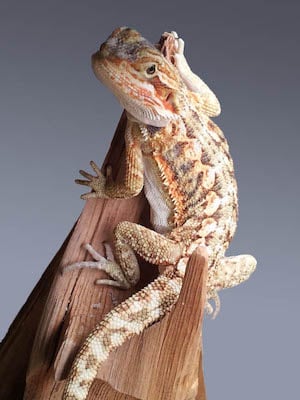
| Common Name | Bearded Dragon |
| Scientific Name | Pogona Vitticeps |
| Lifespan (in captivity) | 8 to 12 years |
| Lifespan (in nature) | 5 to 8 years |
| Size | 16” to 20“ |
| Diet | Omnivore |
The inland bearded dragon is indigenous to Australia. These reptiles get their name because of a behavior where they puff out and darken the spiky skin around their throats, which looks like a beard. Bearded dragons are omnivorous reptiles, as they eat both greens and insects. They are one of the most popular reptile pets due to their relative hardiness, and interactive and docile nature.
Many people get a bearded dragon and don't know what to do next. Often, pet stores do not provide accurate or complete care information to customers. We're here to help! Please explore the wealth of information on this site to help you take the best care of your bearded dragon as possible. And be sure to visit our friendly forum community, where you can get answers to your remaining questions, or just stop in to say hello! Welcome to BeardedDragon.org!
Many people get a bearded dragon and don't know what to do next. Often, pet stores do not provide accurate or complete care information to customers. We're here to help! Please explore the wealth of information on this site to help you take the best care of your bearded dragon as possible. And be sure to visit our friendly forum community, where you can get answers to your remaining questions, or just stop in to say hello! Welcome to BeardedDragon.org!

